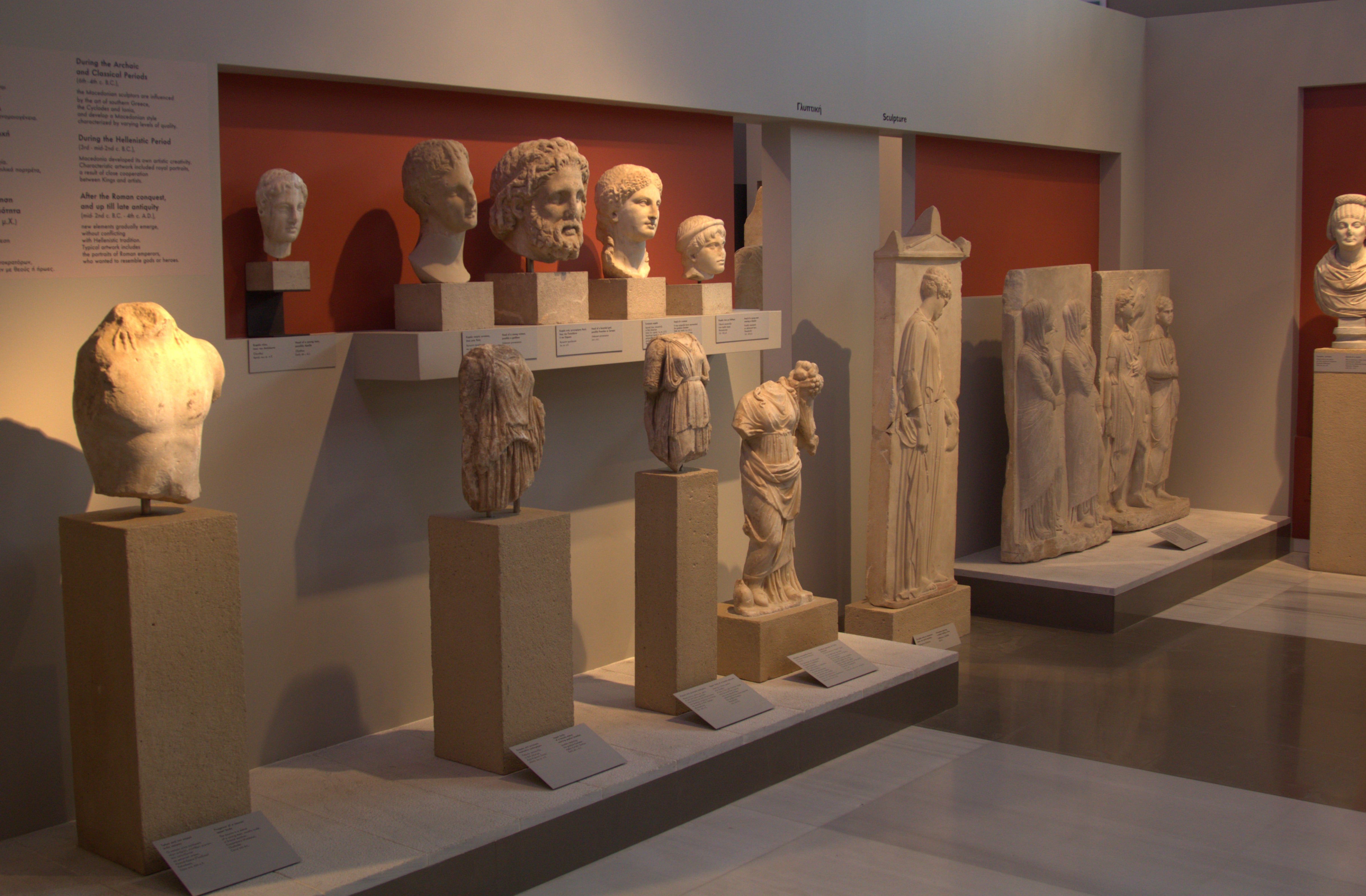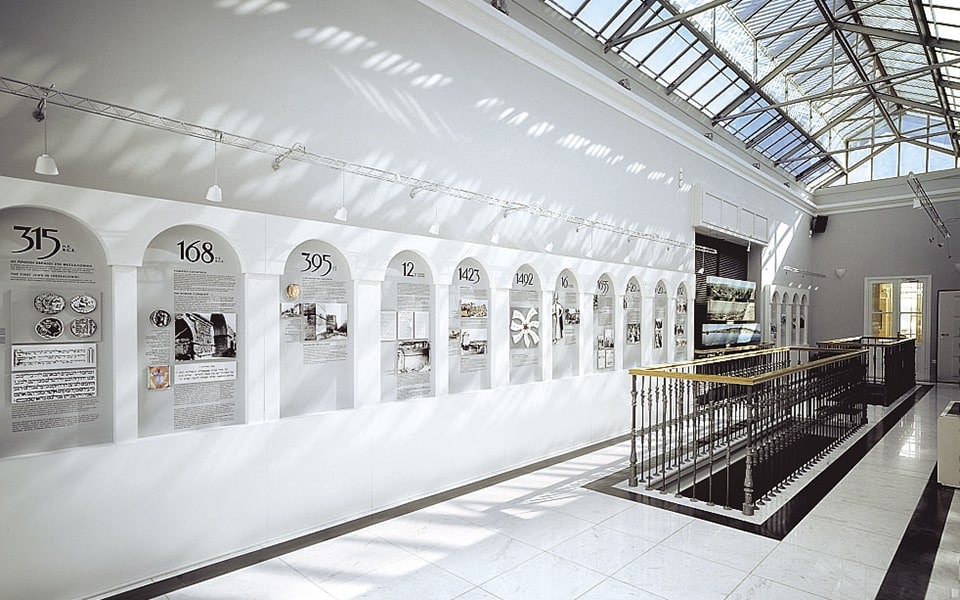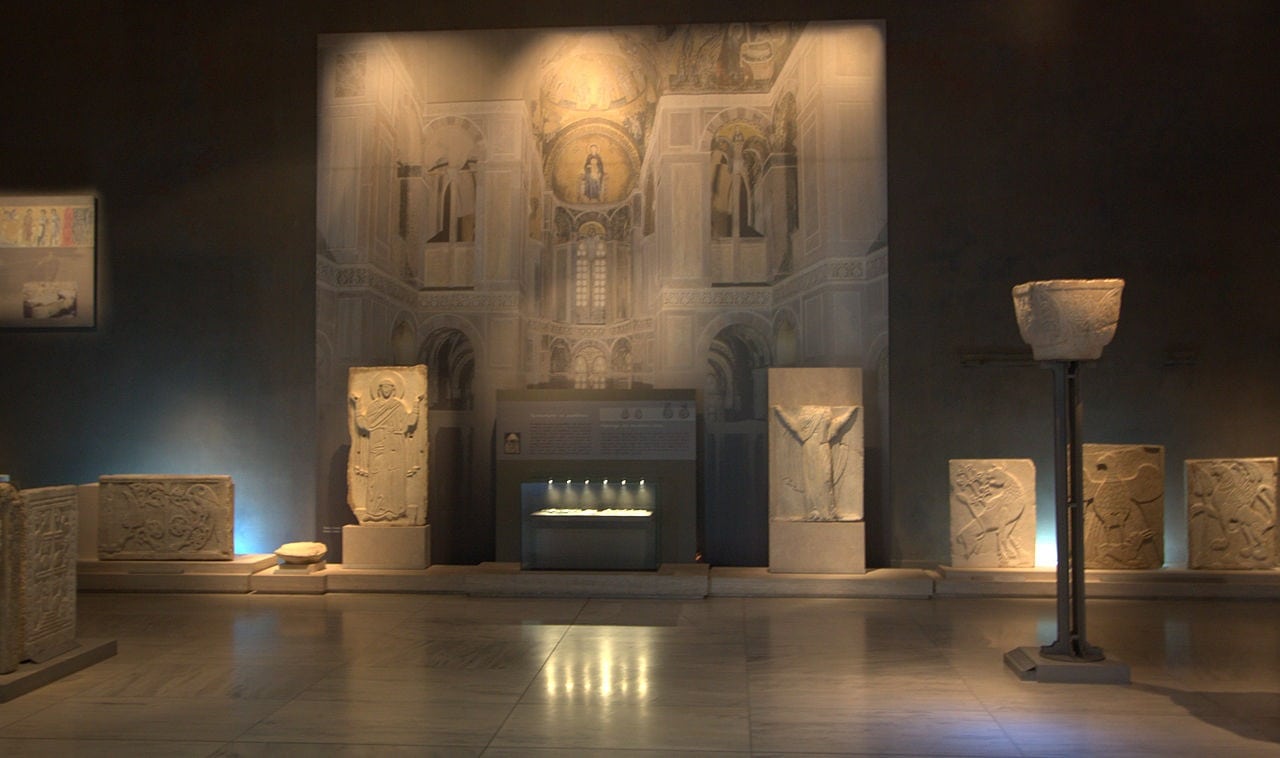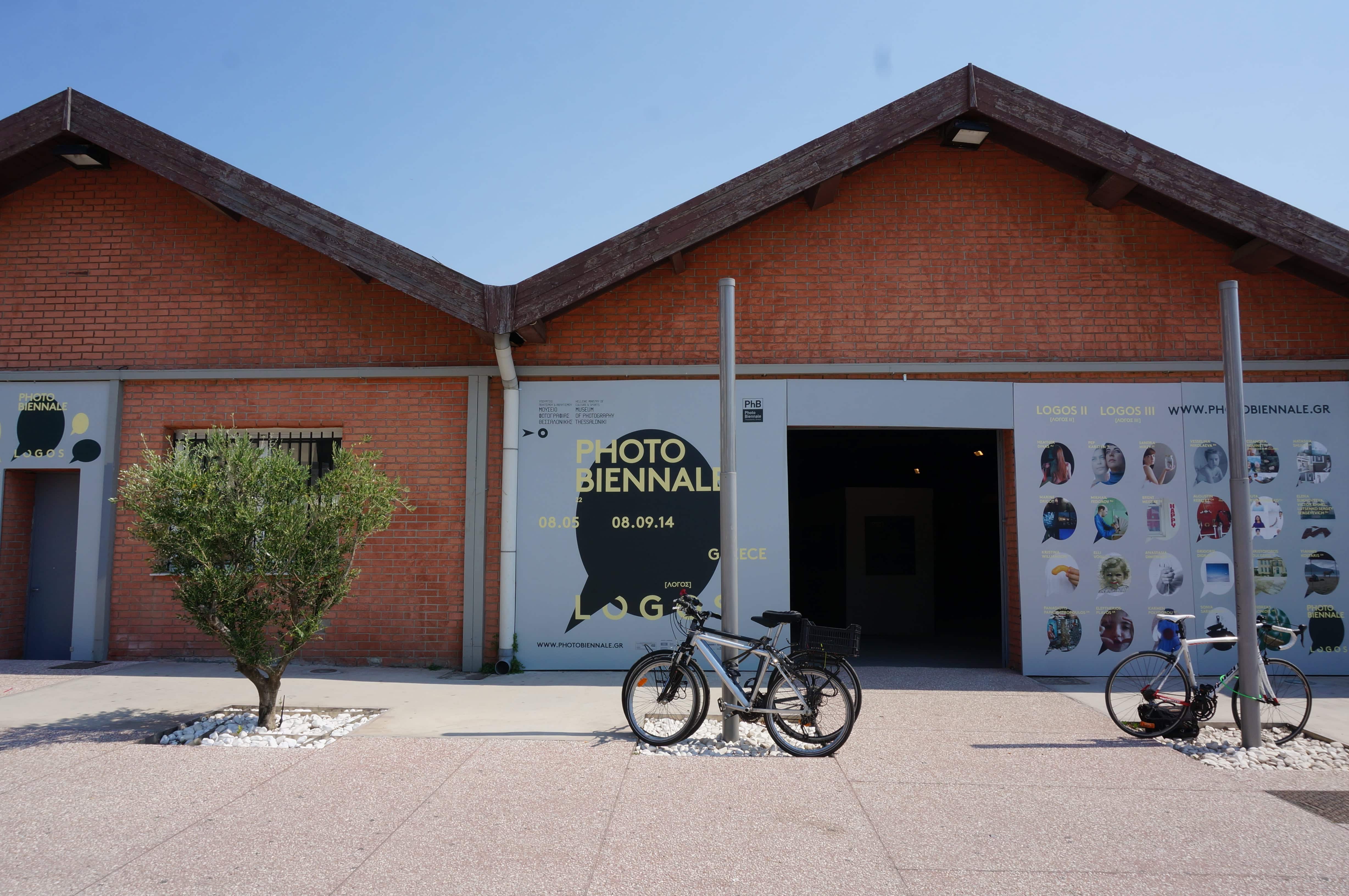A feet in Thessaloniki

Thessaloniki is the second-largest city in Greece, with over 1 million inhabitants in its metropolitan area, and the capital of Greek Macedonia
People are attracted like magnets to the huge arms of this city-port that seems to constantly close an eye to destiny, close and open circles, flourish and decay – without ever going unnoticed! Travelers, merchants, Romans, Jews, Ottomans, Asia Minor refugees, Balkan people, allies and enemies, friends, conquerors: they have all passed from here, adding their own tessera to this incredible mosaic called Thessaloniki. It is worth tasting, literally, as it is famous for its Greek cuisine, nibbles and desserts, but also figuratively, as it has its own unique ambience and many interesting attractions.
MAIN ATTRACTIONS
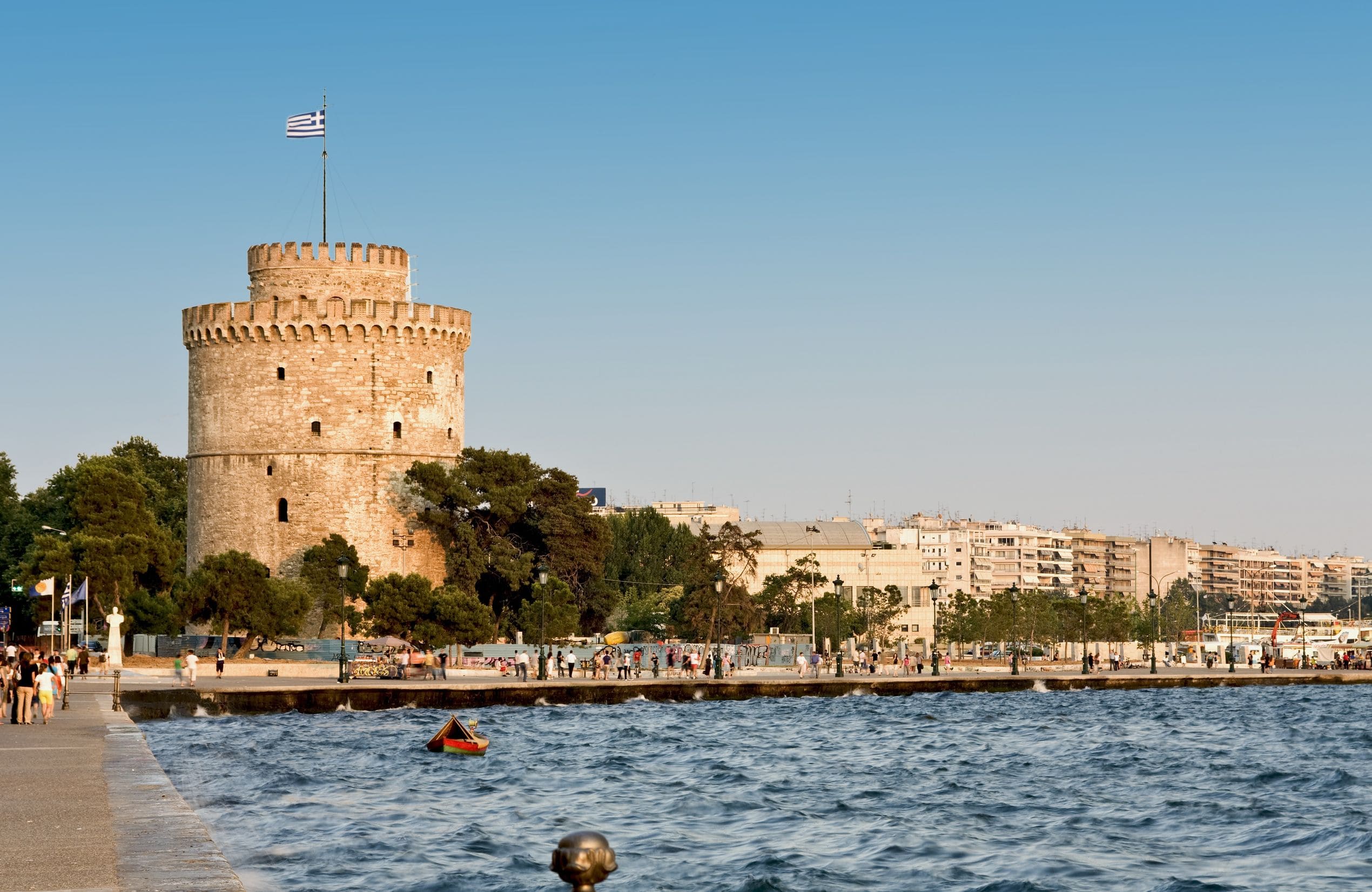
The White Tower
It is the emblem of Thessaloniki, rising at its waterfront since the early 16th century. The tower was part of the perimeter walls of the city, at the point where their eastern part met the sea wall. It was initially used as a defensive stronghold and it replaced an older Byzantine fortification. Its construction was completed in 1535-6. In the 18th century, it was called Kalamaria Fortress and in the 19th century Tower of the Janissaries or Bloody Tower – because it was a long-term convicts prison and its façade was painted with blood due to frequent executions of prisoners by the Janissaries. In 1890, while the Ottomans had already begun the process of Europeanizing the city, it was symbolically whitened with lime and got the name it has ever since. Inside the White Tower, there is an exhibition presenting the city’s history through a set of applications and images, projections, videos, slides, sound documents, touch screens and a few artifacts. More information can be found at www.lpth.gr.
Aristotelous Square
It is the most famous square of Thessaloniki and one of the most impressive squares in Greece. The members of the famous Emperor Committee, that was in charge of redesigning the city after the great fire of 1917, strolled here, and this is where the clusters of famous Greek and foreign people who took part in the first week of Greek cinema in 1960, at Olympion Hall, hang out. During the city’s recent history, concerts, political protests and happenings have been held here. Parents drink their coffee sitting in the comfy outdoor sofas of the cafés, letting their children play in the square.
It was designed by French architect Ernest Hébrard in 1918, but most of the square was built in the 1950s
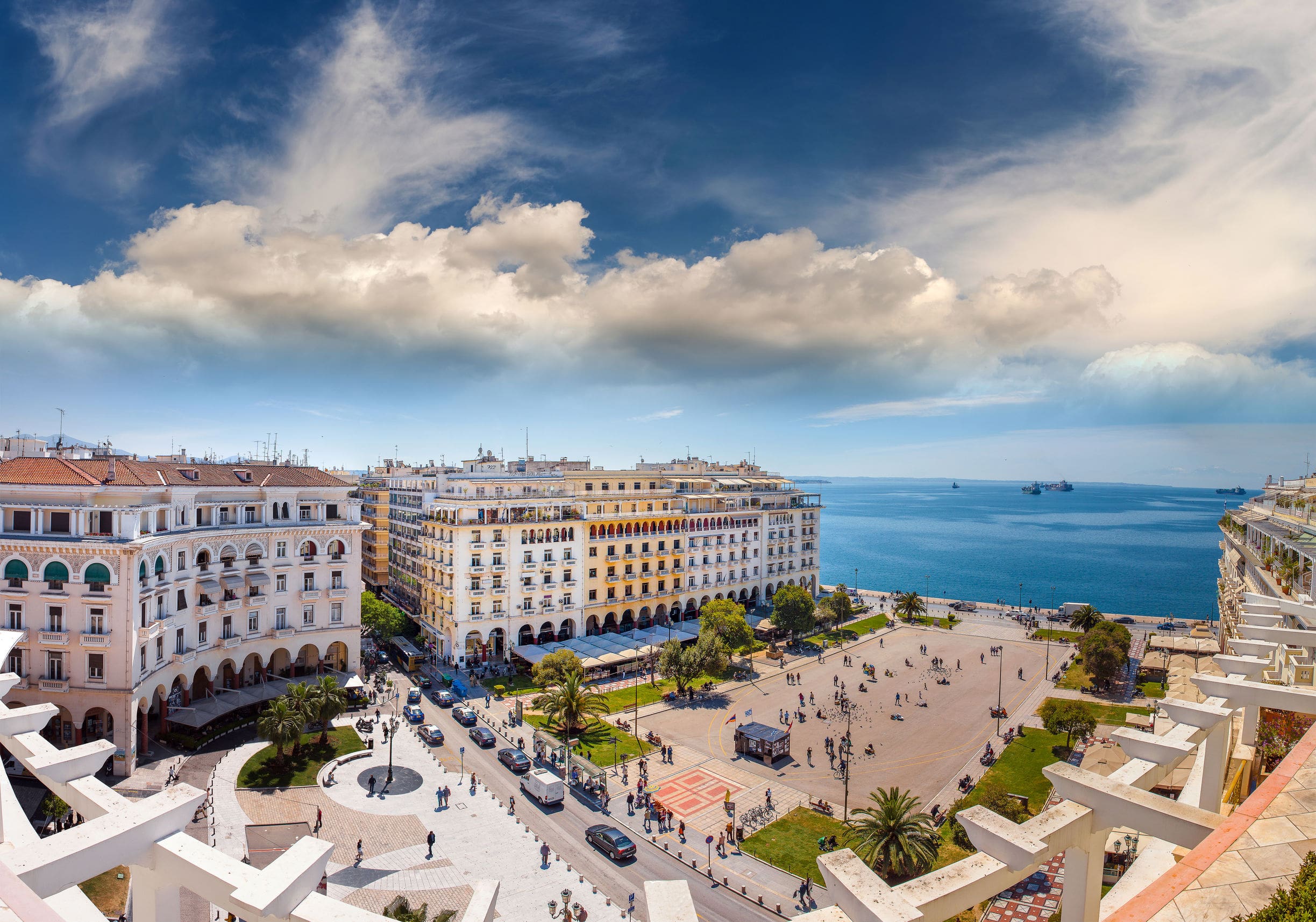

Aristotelous Square
It is the most famous square of Thessaloniki and one of the most impressive squares in Greece. The members of the famous Emperor Committee, that was in charge of redesigning the city after the great fire of 1917, strolled here, and this is where the clusters of famous Greek and foreign people who took part in the first week of Greek cinema in 1960, at Olympion Hall, hang out. During the city’s recent history, concerts, political protests and happenings have been held here. Parents drink their coffee sitting in the comfy outdoor sofas of the cafés, letting their children play in the square.
It was designed by French architect Ernest Hébrard in 1918, but most of the square was built in the 1950s
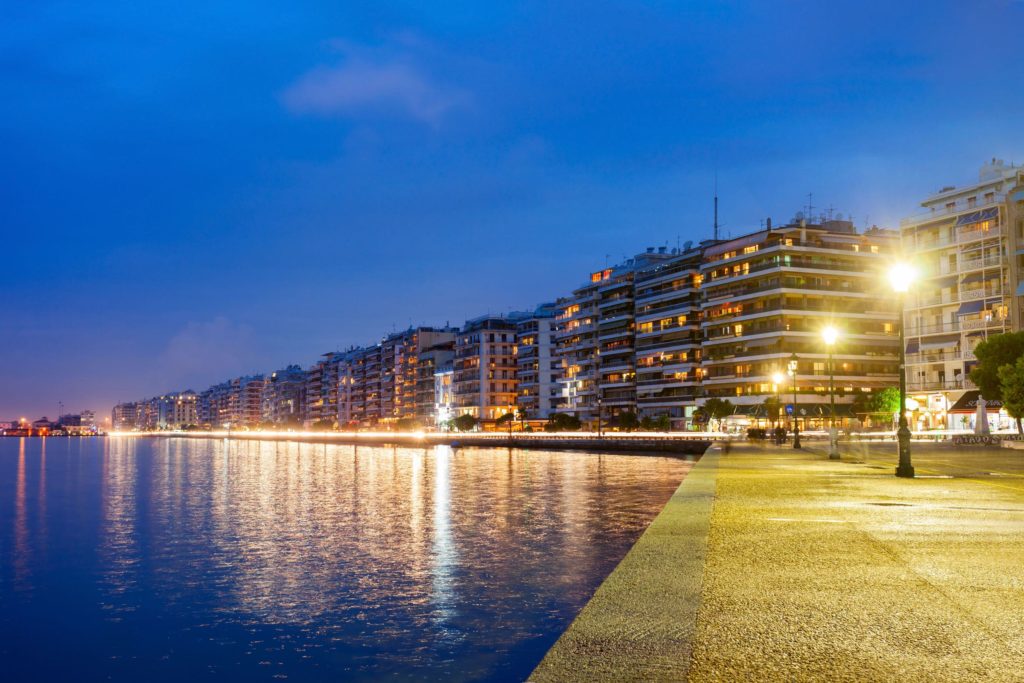
The Old Waterfront Promenade
The quayside now called Old Waterfront Promenade was created during the Turkish occupation, when Sabri Pasha of Smyrna was the area’s commander. Nowadays, it is a narrow pedestrian lane and an asphalt road with dense traffic. Opposite the sea, the tall, clinched buildings rise. The Old Waterfront Promenade is the most famous and vibrant public space of the city, its gateway to the infinite “boundary” of water. It has defined the city’s identity since the 19th century it and became an integral part of its everyday life. As urban planners note, the coexistence of the old waterfront promenade with the new one, which starts at Makedonia Palace Hotel and has ample spaces, limited structure and green areas, gives the city a unique balance and a special identity.
The Ladadika neighbourhood
Where Ladadika stand today, Constantine the Great created the first port of Thessaloniki in 315 AD.
Following the most popular shopping street of Thessaloniki, Tsimiski Avenue, right after Platia Eleftherias (Freedom Plaza), you will discover “Ladadika” district, a beautiful walkable area which is one of the favorite destinations for both local and tourist visitors and the city’s college community.
Ladadika is one of the hot spots of Thessaloniki when it comes to entertainment. It is located in a central area right opposite to the port’s central gate and within a five-minute walk from Aristotle’s square. The colorful buildings are two-story with wide, rectangular windows and, along with the paved alleys, they exhale the spirit of old Thessaloniki. Here the old merges with the new.
Today, after consecutive renovations, it is one of the nicest neighbourhoods at the city centre, full of stylish cafés and restaurants, small squares, cobblestone streets and an avant garde ambience.
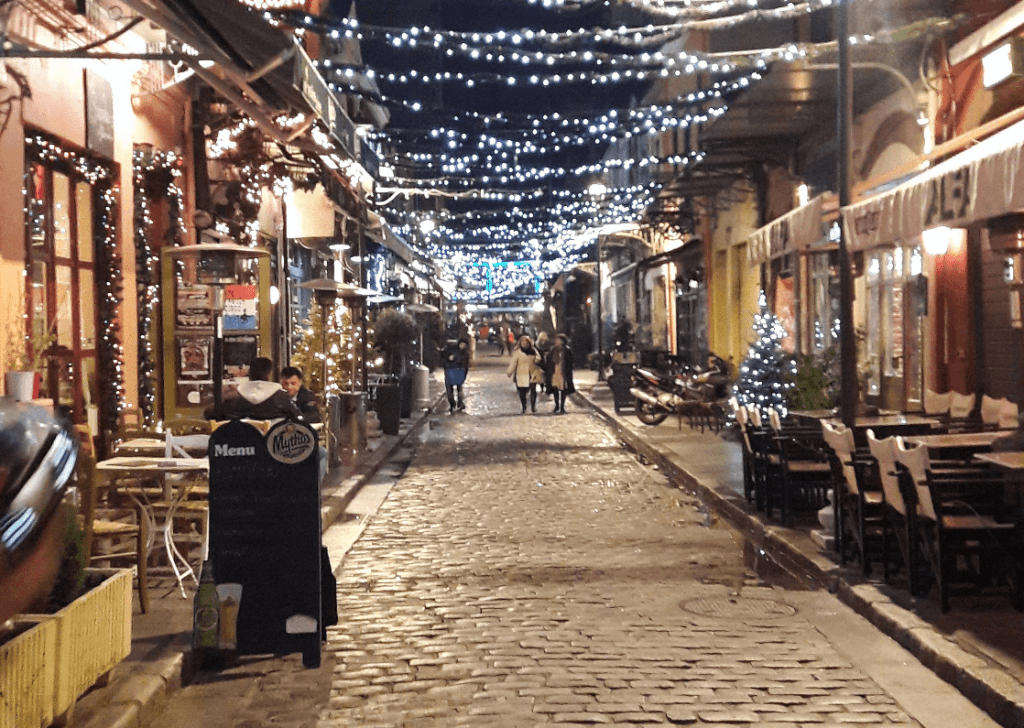

The Ladadika neighbourhood
Where Ladadika stand today, Constantine the Great created the first port of Thessaloniki in 315 AD.
Following the most popular shopping street of Thessaloniki, Tsimiski Avenue, right after Platia Eleftherias (Freedom Plaza), you will discover “Ladadika” district, a beautiful walkable area which is one of the favorite destinations for both local and tourist visitors and the city’s college community.
Ladadika is one of the hot spots of Thessaloniki when it comes to entertainment. It is located in a central area right opposite to the port’s central gate and within a five-minute walk from Aristotle’s square. The colorful buildings are two-story with wide, rectangular windows and, along with the paved alleys, they exhale the spirit of old Thessaloniki. Here the old merges with the new.
Today, after consecutive renovations, it is one of the nicest neighbourhoods at the city centre, full of stylish cafés and restaurants, small squares, cobblestone streets and an avant garde ambience.
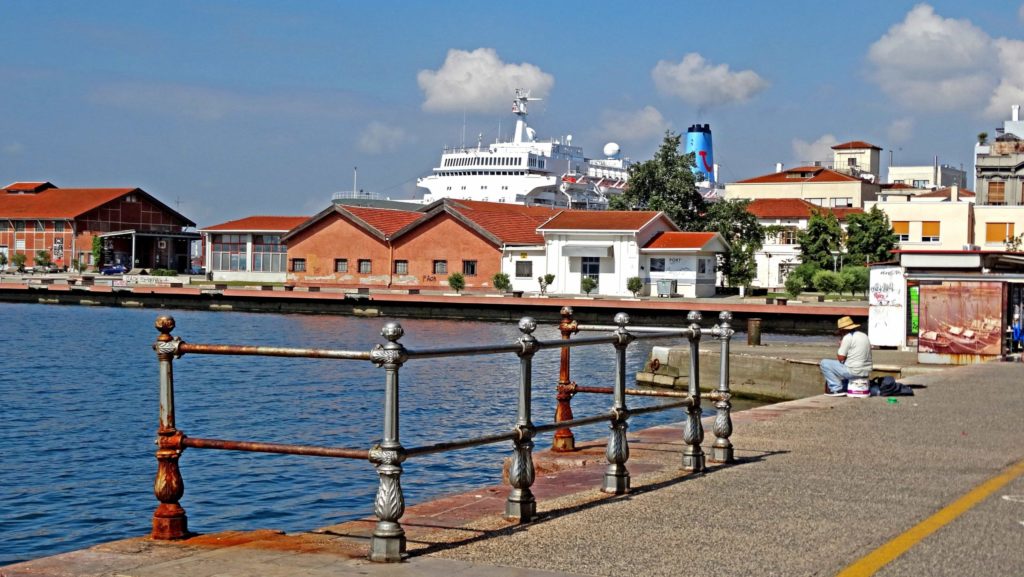
The port
The port of Thessaloniki has a history exceeding 2,300 years. The first port was created in 315 by Constantine the Great as an artificial port. It was situated at the location of contemporary Ladadika and the Jewish district spread around it. In modern times, most of the Thessalonians walked about it and loved it after the renovation of the old warehouses that were built in 1910 by architect Eli Modiano, following the characteristic morphology of European industrial buildings of the late 19th-early 20th century.
The warehouses restoration and reconstruction took place in 1997, when Thessaloniki was the Cultural Capital of Europe. In their premises, the Museum of Photography, the Cinema Museum, the Centre of Contemporary Art (see the Museums section) and a nice café-restaurant are housed.
Kamara- Rotunda- Galerian complex
Kamara is one of the most important landmarks of Thessaloniki and part of a larger complex with palaces of great history. It was built as a huge complex of palaces in the early 4th century at the southeastern part of the then walled city. The buildings became the administrative and religious centre of the city. They stretched from the Rotunda to the seafront and from the east wall of the city to the area between Navarinou Square and Aghia Sofia. The complex included the Rotunda (also called Aghios Georgios, named after the chapel located opposite its west entrance), the triumphal arch, namely Kamara, and the palace complex at Navarinou Square.
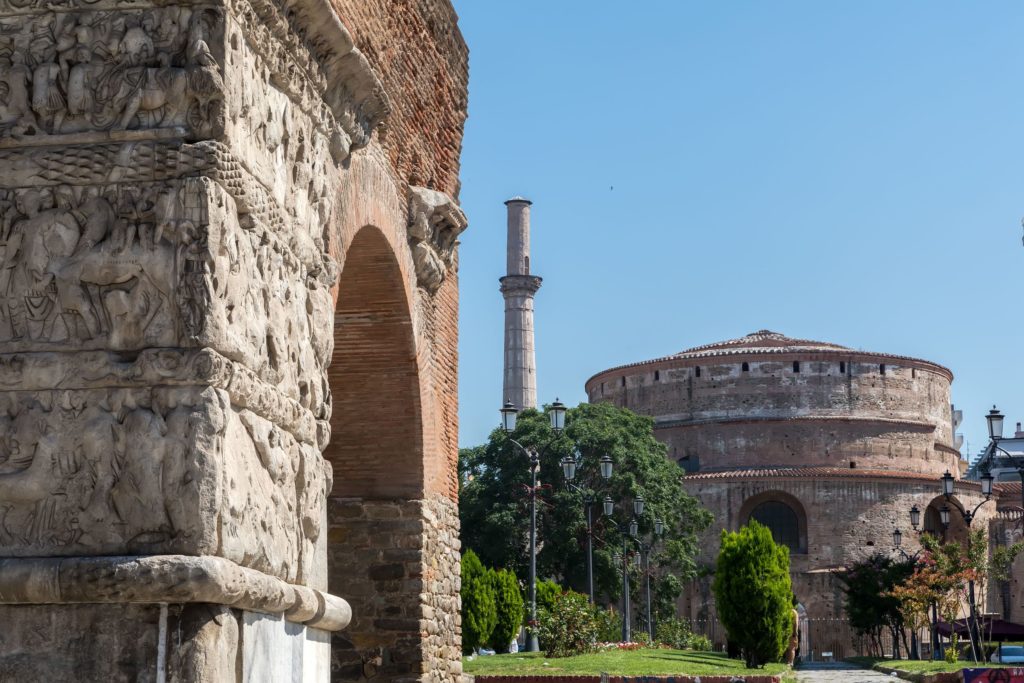

Kamara- Rotunda- Galerian complex
Kamara is one of the most important landmarks of Thessaloniki and part of a larger complex with palaces of great history. It was built as a huge complex of palaces in the early 4th century at the southeastern part of the then walled city. The buildings became the administrative and religious centre of the city. They stretched from the Rotunda to the seafront and from the east wall of the city to the area between Navarinou Square and Aghia Sofia. The complex included the Rotunda (also called Aghios Georgios, named after the chapel located opposite its west entrance), the triumphal arch, namely Kamara, and the palace complex at Navarinou Square.
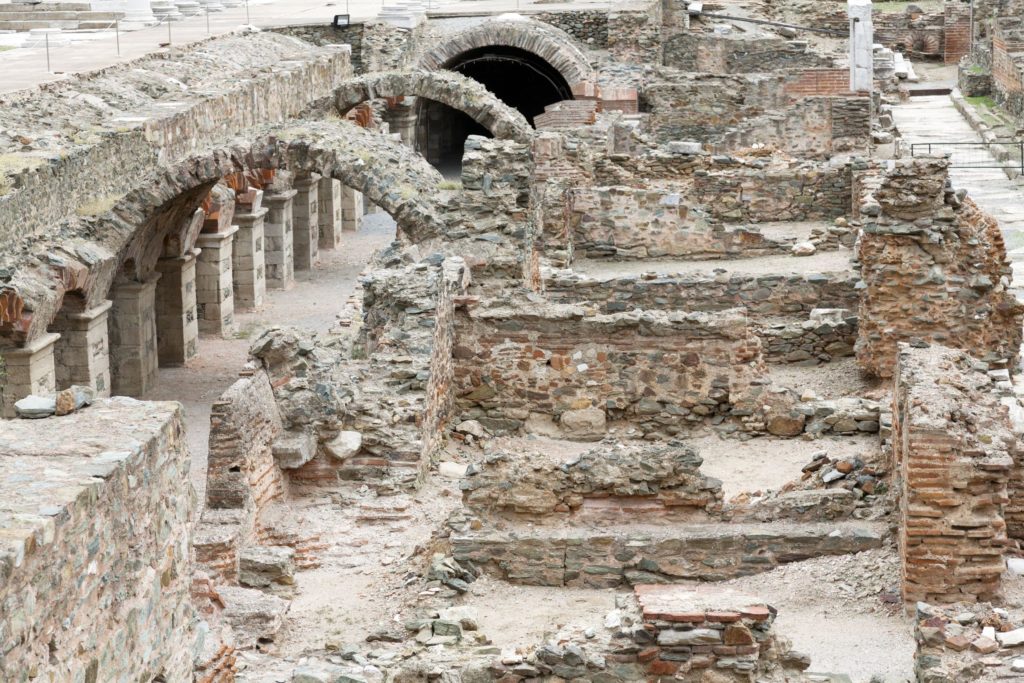
The Ancient Market
The Ancient Market square is located between Philippou, Olympou, Agnostou Stratioti and Karmopola streets, in the heart of the city. It was the administrative centre of Thessaloniki during Roman times. Its revelation took place 1962 during excavations because, according to the Emperor plan, the court house was going to be built there.
Aghios Dimitrios
He is the patron of Thessaloniki and its inhabitants, celebrated on October 26. In Byzantine icons and contemporary iconography, he is depicted as a red horse rider who steps on infidel Lyaios. The church’s crypt is very impressive, with a particularly imposing atmosphere. The exhibition featuring the church’s sculptural decoration concerns various phases of its history – works that survived the disastrous fire of 1917 or were found in excavations. It is located at Aghiou Dimitriou Street, going up from Aristotelous Square.
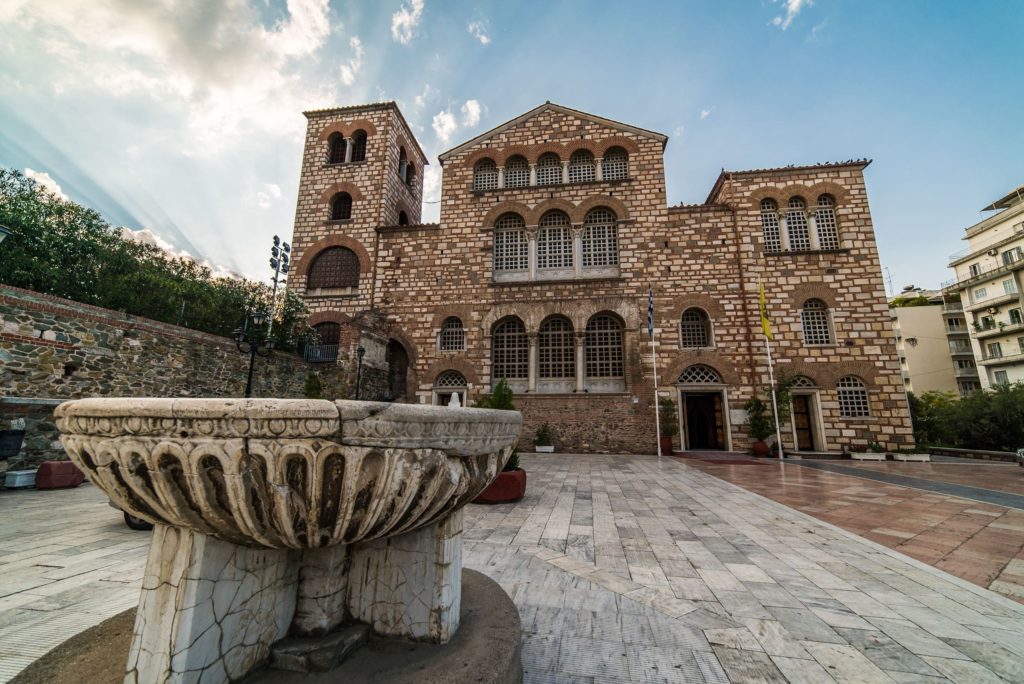

Aghios Dimitrios
He is the patron of Thessaloniki and its inhabitants, celebrated on October 26. In Byzantine icons and contemporary iconography, he is depicted as a red horse rider who steps on infidel Lyaios. The church’s crypt is very impressive, with a particularly imposing atmosphere. The exhibition featuring the church’s sculptural decoration concerns various phases of its history – works that survived the disastrous fire of 1917 or were found in excavations. It is located at Aghiou Dimitriou Street, going up from Aristotelous Square.
Museums
Markets
Shopping is one thing that you will definitely enjoy during your stay in Thessaloniki. The city offers plenty of options so that no taste or wallet are left unsatisfied.
Shopper's Paradise:
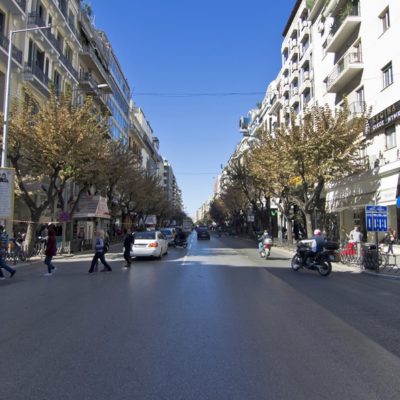
Tsimiski Street
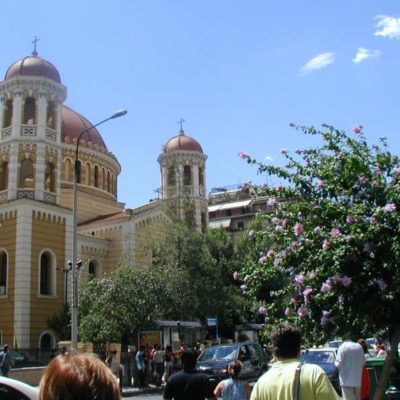
 |
|  |
| 


